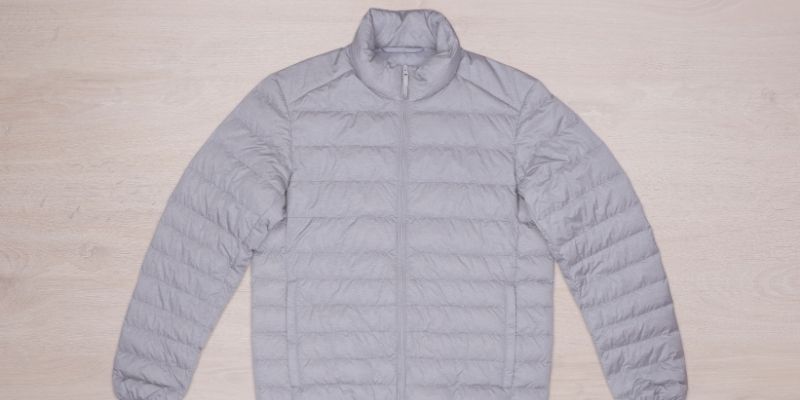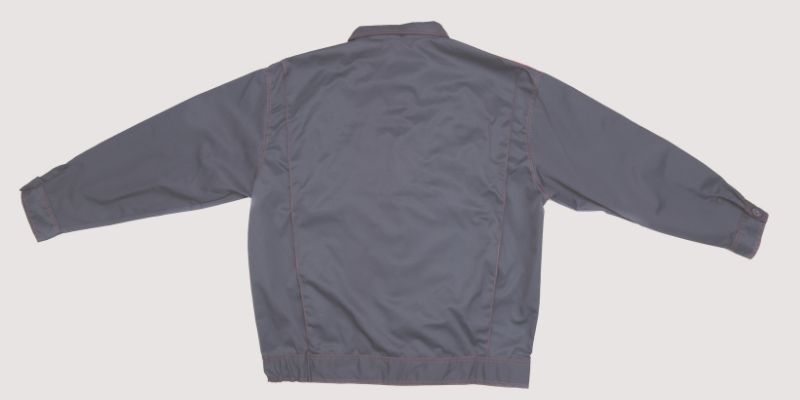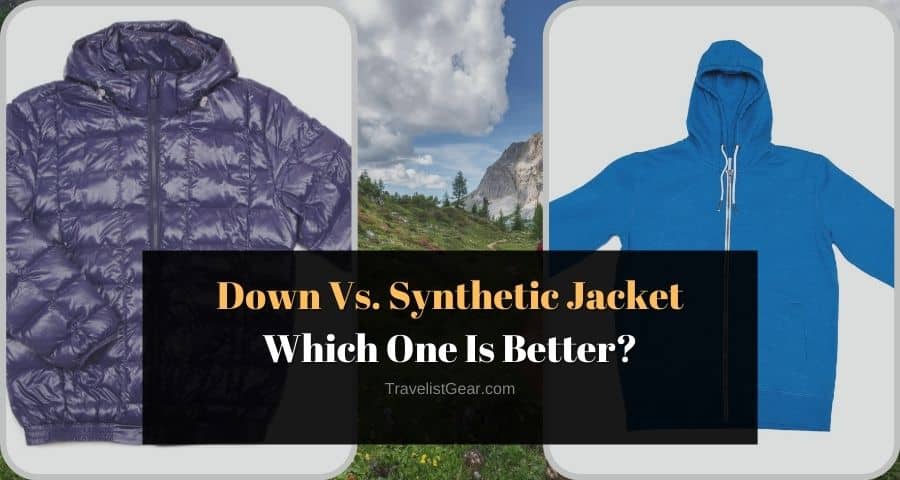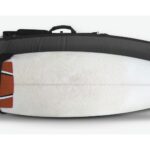When it comes to staying warm outdoors, choosing the right type of jacket is vital.
But, there is always a question of a down vs. synthetic jacket – which is the best for me?
Well, some people prefer down due to better insulation. Other people prefer synthetic jackets because of their versatility.
In reality, whichever you choose has both pros and cons.
If you’re not sure which type of insulation to choose, don’t worry. This article will help you decide what works best for your needs.
Table of Contents
What Is Fill Power?
Fill power is a measurement used to determine the loft of down [1]. The loft is the amount of puff that the actual down feather has.
For instance, if a jacket is 900 fill, it has 900 cubic inches of loft, whereas a jacket with 700 fill power only creates 700 cubic inches.
So you need more than 700 fills in a jacket to create the same warmth as 900 fills in a jacket because it fills less space, so typically, 700 fills.
The jacket will be heavier because it needs more feathers to fill that area than a 900-filled jacket.
The higher the fill power, the more the jacket will be lighter and warmer.
What Is A Down Jacket?

Down jackets are your typical adventurer hiking jacket. You’ll see most people in backcountry down jackets have been around for quite some time.
You can usually spot them because of the baffle design and the puffy look these jackets tend to have.
There are two different types of down jackets. You can get a goose-fill-down jacket made of goose-down, goose-feathers, or a duck-down jacket.
Duck-down jackets are typically a little bit cheaper. They will have a lower fill power than goose down, which will be a little bit more expensive and have a higher fill power.
What Are Synthetic Jackets?

The most significant difference between synthetic and down jackets is that they have no down.
Instead of using natural insulation like a down feather, it uses a synthetic material that does the same thing.
It creates a loft to provide warmth from the outside to the inside. Most of them are the same – made out of synthetic material.
The thermal ball insulation mimics down, with little bitty puffs of synthetic insulation. So it allows it to fill down.
Apex insulation is one big sheet that just kind of puffs up. It has different thicknesses so that you can create additional warmth within jackets.
The warmer you get with a synthetic jacket creates more weight, opposite from down.
Down Vs. Synthetic Jacket: The Battles
Now, discuss the 11 differences between synthetic and down jackets and why you want to use one.
Higher Warmth To Weight Ratio: Down Wins
Let’s start with the warmth-to-weight ratio. Nothing currently comes close to down. It is superior to any synthetic when it comes to warmth-to-weight ratio.
As for comparison, when all things are equal, comparable jackets with comparable shells, fabrics, comparable liners, and equivalent amounts of fill insulation, down is going to keep you warmer.
In the example above, a 900-fill down jacket will be pretty warm and light versus a 700-fill or synthetic jacket.
Compressibility: Down Wins
The next thing I want to talk about quickly is compressibility. Down still wins out in terms of compressibility and durability.
The down can be compressed, and then it can loft back up. Most of these jackets will compress to a tiny size. It doesn’t take up that much room in your pack.
The synthetics haven’t upheld compressing very well. You break the individual fibers whenever you squeeze a synthetic insulation jacket or sleeping bag.
Eventually, they start to lose a substantial amount of loft.
Not all synthetic products or insulations break down as quickly as others, but it’s something to look at.
For example, Mammut Ajungilak Synthetic has better insulation than others.
Moisture Tolerance: Synthetic Wins
When comparing synthetic and down insulation, moisture tolerance is the biggest knock-on-down.
There have been lots of new developments in the market on that. Historically, down has not done that well in the presence of moisture.
You’ve probably heard stories or know others have told you about down jackets or down sleeping bags, which have become saturated to the point where the down cluster no longer maintains its loft.
They’ve collapsed, and at that point, your down jacket or sleeping bag insulation isn’t doing much to keep you warm.
Breathability: Synthetic Wins
With synthetics, that’s always been their significant advantage over down. Synthetic insulation performs much better than down in a humid or wet environment.
Yes, you’re going to get wet in one of two ways.
Firstly, you can get wet from the outside: the elements, rain, or wet snow coming through your jacket’s face fabric and wetting up insulation.
Another way is to get wet from the inside out, which is your body sweating or moving lots of moisture.
You need to migrate or move that moisture from next to your body to the environment.
So, if you have to move it through the insulation, breathability is important.
Tendency To Lose Loft When Wet: Synthetic Wins
The downside with a down jacket is that when down feathers get wet, they lose their loft. Down feathers tend to clump together when they get wet.
They can’t create the loft to fill the space to keep the warmth inside of the jacket. It takes a long time for them to dry out when they do get wet.
So what’s the solution?
One of the solutions is to waterproof the down jacket. I highly recommend the Nikwax Softshell Cleaning & Waterproofing Pack because it helps restore water repellency and is easy to use.
Baffles: Synthetic Wins
The main reason synthetic jackets are better than down jackets is that they have no baffles. On a down jacket, you have baffles, which are little stitch lines.
They are in there because the down tends to fall and go wherever at once.
To keep all the down in that space, they must create a baffle or a stitch to ensure it doesn’t fall into the jacket’s next section.
The stitch also creates a little bitty layer that wind can get through. Synthetic jackets are usually a one-piece synthetic; you don’t have that baffle.
You can stay warmer in your synthetic jackets.
Materials: Synthetic Wins
Another con of going with a down jacket would be material because the jackets use a duck down or a goose down feather.
That means they’re not precisely hypoallergenic. If you are vegan, you wouldn’t exactly want to wear a jacket made out of animal products.
This is where the synthetic materials win, hands down.
Versatility: Synthetic Wins
Unlike down jackets, synthetic jackets are more versatile because they have better waterproofing.
If you go hiking on trails, you know that you don’t have to worry about the weather. Whatever the weather is: hot, rainy, snowing, wet, or dry – you’re good with your synthetic jacket.
But with a down jacket, there are a lot of times out when you’re hiking, and you know that it’s going to rain. You instantly want to remove and stuff your jacket back in your pack.
Then, you will put your rain jacket on so your jacket doesn’t get wet. So you don’t have to worry about the clumping and then having to dry it out later.
Weight: Down Wins
Down feathers weigh nothing. The jackets tend to be pretty lightweight and more compressible than synthetic alone.
Synthetic is slightly heavier than down because the former has a higher weight-to-warmth ratio than down.
That means it must be heavier to achieve the same warmth as down. The warmer you get with a synthetic jacket, the more material they use. That adds weight.
If you’re looking at a synthetic jacket with the same warmth as a down jacket, it will be heavier because it must use more material to emulate what down can do.
Life Expectancy: Down Wins
Over time, both down and synthetic start to lose their loft. It starts to break down a little bit.
With synthetic material, the fibers in the synthetic insulation will eventually break down over time.
Then, the jacket starts to lose its puff and get thinner. The synthetic jacket lost its loft and puff and is not quite as warm as it used to be.
On the other hand, with down jackets, your oils, skin, and dirt start collecting in the feathers. It makes them start to smush together.
You can usually take, clean, and get it down to puff back up.
Price: Synthetic Wins
The Down jackets are expensive, especially when discussing the higher-fill, lighter-weight jackets.
Generally, the down jackets’ price can be close to $300, if not slightly over.
On the other hand, synthetic jackets have a friendly price tag. Thus, they are more prevalent among people who are on a budget.
The Comparison Table
In summary, here’s a quick comparison between down and synthetic jackets:
| Points | Down | Synthetic |
|---|---|---|
| Higher Warmth To Weight Ratio | ✓ | |
| Compressibility | ✓ | |
| Moisture Tolerance | ✓ | |
| Breathability | ✓ | |
| Tendency To Lose Loft When Wet | ✓ | |
| Materials | ✓ | |
| Versatility | ✓ | |
| Weight | ✓ | |
| Life Expectancy | ✓ | |
| Price | ✓ |
Conclusion: Which Jacket Should You Get?
It boils down to what environment you will be hiking or traveling in the most. Also, what type of usage are you planning on getting out of the jacket?
There are a ton of synthetic jackets and down jackets on the market. They’re all awesome.
It comes down to figuring out what you need, your price point, and how long you plan to use it.
If you’re going hiking, it’s better to use synthetic jackets on the trail because the environment is different in all regions of the country.
Sometimes, you’ll go out and hike in a wet environment, and sometimes, you’ll hike in a dry climate.
So, a synthetic jacket makes sense because you can take it anywhere.
But all that comes down to your personal use.











